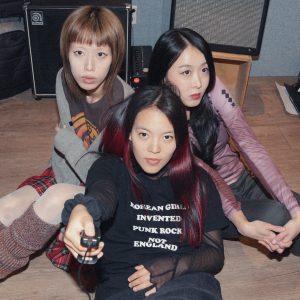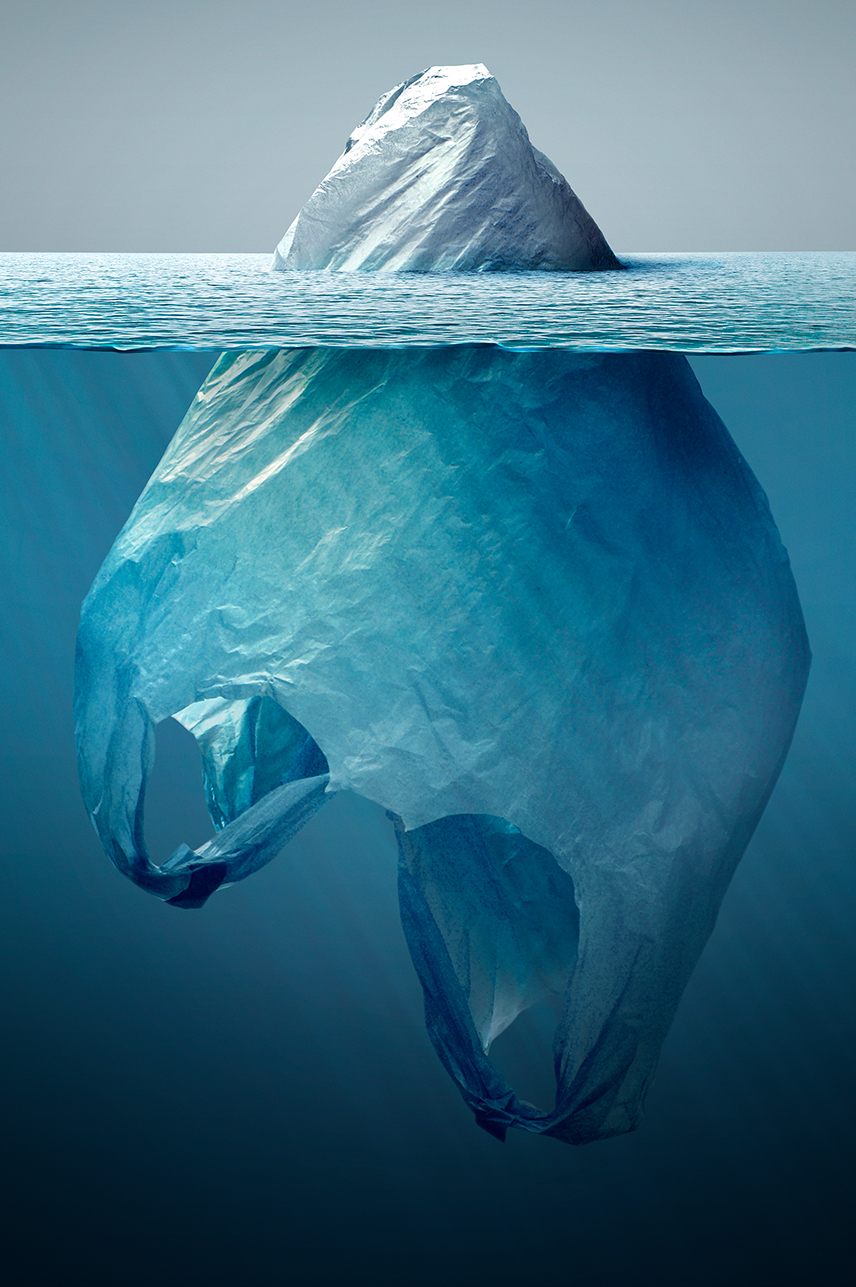Iceberg made out of a plastic bag – most of us can recall this image. It’s the cover of the issue of National Geographic focused on the topic of plastics in the environment. “Plastics aren’t inherently bad. It’s what we do, or don’t do, with them that counts”, wrote marine biologist Sylvia Earle, and Laura Parker’s article asks the question of whether we can enjoy the benefits of plastic and preserve the environment.
www.nationalgeographic.com
The same question became the starting point for the collection of fabric prints and garments titled “100% HUMAN MADE”, by Sandra Magdalena Dąbrowska.
The premise was to observe, analyse and recreate, through the means of design language, the characteristics of single-use plastic objects. The ones we use in our daily lives and the significance of which we are rediscovering right now, in the pandemic reality of sterility and takeout food. The layouts inspired by plastic intended to show the wide range of its properties. Various textures (smooth and shiny as well as those with a clear texture smooth and shiny as well as those with a clear texture irregularly refracting light), colours (a wide range of colours – saturated, pastel and neon), transparency (from transparent to non-translucent) or scales (from real size to scaling) were used in the creation of six fabric print designs and four garment designs, constituting a coherent collection. Such a wide range of aesthetic measures allowed the author to create both unique and seamless repeating prints and use them in the clothing collection. To reflect the nature of single-use plastic items, that were direct source of inspiration, the forms of clothing go beyond the body, are voluminous and scaled up.
Techniques used include fabric manipulation by wrinkling, stitching and pulling with a rubber band. The colours are saturated, some of them even neon. The same colour palette is used in sewing accessories, such as rubber bands or stoppers. Since the seas and oceans play a key role in the discussion on environmental pollution with plastic waste, the image photo shoot was organised on the beach on the Baltic Sea. Sandra Magdalena Dąbrowska chose this scenery to be consistent with the theme of the entire collection. Both the set design, the concept of the shoot and the photos themselves are by the author herself. Samuel Sadiku, a model from Nigeria, was posing in this shoot. His participation in the project emphasises the global nature of the represented problem.

The collection doesn’t make statements, doesn’t provides any answers. It doesn’t tell us what to think, nor does it judge plastic as a material, or its use. It rather indicates a complexity of the subject in matter. It doesn’t aim to be controversial, but rather to show that the source of inspiration can be ambiguous, neither positive nor negative. It finds colour in the grey area of opinions.
It is a concept collection that was created as a final project of the Master’s degree on The Faculty of Textile and Fashion at the Academy of Fine Arts in Łódź. All its components – both printed fabrics and clothes – were made as samples. Sandra presented her earlier works (the men’s Four Piece Suit collection) at various events, such as the Łódź Young Fashion Award, KTW in Katowice or in the final of the Mados Injekcija contest in Vilnius. She is currently working on a new project, using methods of 3D design. She expands the phrase “everything has already been done in fashion”by arguing that everything in fashion has already been produced and we don’t need to manufacture anything new. Therefore, she tries to carry out her further work in the spirit of less waste, believing that in the 21st century, the creation is recreation.

Kacey Fifield doesn’t want to feel left behind

Is it hard to be a woman in the music industry?

Are you ready for Glastonbury 2024?

Poise takes her music to new heights

Iconic electro duo – Empire of The Sun brings nostalgia in a new release



